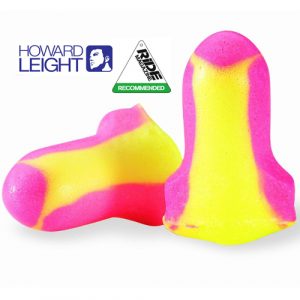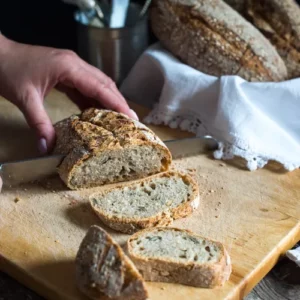Blood is the fluid of life, without blood the human body would stop working. As the heart pumps it forces blood through a network of tube-like blood vessels which branch out throughout every part of the body. There are three main types of blood vessels:
ARTERIES – the largest and thickest of the blood vessels. These vessels carry blood from the heart to all the cells in the body. The largest artery of the body is called the aorta, the aorta originates from the heart and then branches out into smaller arteries, the smallest arteries are called arterioles, which branch out until they become tiny capillaries.
CAPILLARIES – the smallest blood vessels, it is in the capillaries that the exchange of oxygen and carbon dioxide take place. Capillaries are so small that red blood cells can only travel through them in single file.
VEINS – similar to arteries but because they transport blood at a lower pressure they are not as strong as arteries. Very small veins called venules receive blood from the capillaries, after the exchange of oxygen and carbon dioxide has taken place. The venules branch into larger veins, which eventually carry the blood to the largest vein in the body, known as the vena cava, where the blood is then transported to the heart.
The heart pumps blood through the arteries, capillaries and veins, carrying nutrients from digested food and oxygen to every cell in the body. The blood also removes carbon dioxide and waste products.
The adult human body contains approximately 5 litres of blood and accounts for approximately 7-8% of our total body weight.
Where is blood made?
Blood cells are produced in the bone marrow, which is a soft spongy material that fills up the cavities of the bones. All of the different types of blood cells are made in the bone marrow. In a healthy individual millions of red and white cells are produced and formed daily in the bone marrow.
What is blood made up of?
Everyone’s blood is made up of a fluid called plasma and three types of blood cells, red, white and platelets. Nearly half the blood, approximately 45% is made up of the various blood cells the remaining 55% is plasma. Carry on reading to learn more about each of these.
Plasma is the liquid portion of the blood, it is a clear, yellowish (straw colour) fluid and is mostly made up of water(90%) and salts. Blood cells travel through the body in plasma. In addition to carrying blood cells throughout the body, plasma also carries hormones, nutrients, proteins and chemicals such as iron.
Red blood cells are also known as erythrocytes, their primary function is to carry oxygen from the lungs to the cells all around the body. They do this through haemoglobin, an iron containing protein that actually carries the oxygen and gives blood its red colour.
The blood contains more red blood cells than any other type of cell. In a single drop of blood there are millions of red blood cells. Besides carrying oxygen, red blood cells help to remove carbon dioxide from the body.
White blood cells are also known as leukocytes and their main function is to help our body fight infection. They circulate around the body so that they can be transported to an area where an infection develops. A drop of blood can contain anywhere from 7,000 to 25,000 white blood cells at a time. When the number of white blood cells in the blood increase, this is a sign of infection somewhere in your body, for example a person with leukaemia could have as many as 50,000 white blood cells in a drop of blood.
There are 5 different types of white blood cells produced by the bone marrow, the main two are called, neutrophils, the most numerous of the white blood cells and one of the body’s main defences against bacteria and lymphocytes, the second most numerous of the white blood cells, lymphocytes are involved in making antibodies as part of the immune response.
Platelets also known as thrombocytes are the smallest of the blood cells. Platelets are irregularly shaped, colourless bodies that are present in blood, it is their sticky surface, along with other substances that forms clots to stop bleeding. Without them we would bleed to death. When bleeding from a wound suddenly occurs, the platelets gather at the wound and attempt to block the blood flow. A clot begins to form when the blood is exposed to air. When we get a scab over a cut that is an external blood clot, when we have a bruise that is the result of an internal blood clot. Both scabs and bruises are clots that lead to healing. However, some clots can be dangerous, as in deep vein thrombosis (DVT) or if a blood clot forms inside a blood vessel it can block the flow of blood and so cut off supply of oxygen. A stroke is the result of a clot in an artery of the brain.
The Incredible Journey of Blood
Every minute, your hard-working heart pumps around 5 liters of blood through an incredible 60,000 miles of blood vessels in your body. Picture a network of flexible tubes winding through every nook and cranny – that’s your circulatory system carrying life-sustaining oxygen and nutrients. Let’s follow a red blood cell on its amazing journey!
After leaving the heart’s powerful chambers, our red hero is propelled through the body’s largest artery – the aorta. Imagine zooming along the highway at lightning speed! As the route narrows into smaller arteries and arterioles, the flow becomes slower and more precise. Finally, our red friend squeezes single-file into a tiny capillary no wider than a strand of hair.
This is where the magic happens. In these microscopic tubes, oxygen and nutrients are offloaded to be greedily snatched up by hungry cells. At the same time, waste carbon dioxide is collected for the return trip. What an efficient little courier service! After this vital exchange, the red cell passes into a venule, joining up with others to form a larger vein back to the heart.
But the journey doesn’t end there. When blood reaches the heart again, it gets a re-energising boost of fresh oxygen from the lungs. Then this revitalised crew heads back out to billions of cells across the body, dropping off their goods and picking up waste products again in a continuous life-giving loop.
The Incredible White Blood Cell
While red cells are the couriers, white blood cells are like a brave security force, constantly patrolling for threats. These versatile warriors come in different squadrons – from the gunners (neutrophils) that swarm and destroy bacterial invaders, to the intelligence agents (lymphocytes) that coordinate the immune system’s response.
At the first sign of trouble like a cut or infection, reinforcement cells are signalled to rush to the area. They squeeze through capillary walls to the site of the battle, ingesting dangerous microbes and firing chemical weapons to wipe them out. After emerging victorious, these skilled medics get to work cleaning up debris and promoting healing of the injury site.
Platelets – The Clotting Crew
You know that scab neatly covering your scraped knee? That’s the handiwork of platelets – tiny fragments acting as the emergency clot response team. When there’s a rupture, they rush in and stick together to plug the leak and stop bleeding. But they don’t just clump haphazardly – they release chemical attractants that call in reinforcements to fully seal the breach.
These brilliant little life-rafts enable us to survive cuts and injuries that would otherwise drain our bodies of precious blood. Just give them a few days to do their mason work rebuilding the breached vessel lining. Then their services are no longer needed, and the clot cleverly dissolves on its own!
What are the different blood groups?
In 1901, scientist Karl Landsteiner reported that blood could be classified into blood ‘types’.
There are 4 main blood groups A, B, AB and O, of which group O is the most common (47% of population). The blood type is determined by proteins called antigens found on the surface of red blood cells. If you have the antigen A on the red blood cells then you have got type A blood. When B antigen is present, you have type B blood, when both A and B are present, you have type AB blood. When neither are present you have type O blood.
Another blood group system involves Rhesus factors. The name Rhesus comes from the Rhesus monkeys in which the protein was first discovered. Rhesus factor D, the most important, is found in the blood of 85% of people, they are known as Rhesus positive. The remaining 15% are Rhesus negative. So people can be classified according to both systems, for example AB positive or O negative.
The Rhesus factor is important during pregnancy, a baby’s life can be endangered if it inherits a Rhesus positive blood type from its father while the mother is Rhesus negative. This is because the mother can form antibodies against the baby’s blood.
Here is a list of the blood types and their frequency in the UK population:
- O positive: 35%
- O negative: 13%
- A positive: 30%
- A negative: 8%
- B positive: 8%
- B negative: 2%
- AB positive: 2%
- AB negative: 1%
Blood donations and transfusions
Blood grouping is essential for safe blood transfusions. A patient must receive a blood type that is compatible with their own blood type. If the blood types are not compatible, red blood cells will clump together, making clots that can block vessels and cause death.
In general a person with type A blood can donate to a person with type A or AB. A person with type B blood can donate to a person with type B or AB. A person with type AB blood can only donate to a person with AB only and someone with O type blood can donate to anyone. This is because type O blood has no antigen on its surface and is often called a universal donor. Blood type AB is the universal recipient as they can receive red blood cells of any ABO type. In an emergency if there is no time for blood grouping the person in need of a transfusion would be given type O blood.
In general anyone aged between 17 and 70 who weighs at least 7 stone 12 lbs and is in good health can give blood. Here are a few examples of people who are unable to give blood :
- If you are pregnant
- If you have a chesty cough, sore throat or active cold sore.
- If you have already given blood in the last 12 weeks
- If you are taking antibiotics or have just finished
- Those with HIV, hepatitis B or hepatitis C.
Please visit the UK blood service website for more information on who can and can’t give blood.
What can go wrong with blood?
Disorders can affect any of the blood’s components, here are a few of the ones you would have heard of:
- Anaemia is the most common disorder of the blood.
- Leukaemia is another condition that affects the blood.
- HIV is a virus that attacks the white blood cells called lymphocytes.
There is also a rare group of disorders where abnormally prolonged or excessive bleeding may occur anywhere in the body after injury or even without injury. One well known, but luckily rare example of this is haemophilia, an inherited condition in which even the smallest injury can cause fatal internal or external bleeding.
How do I maintain healthy blood?
Blood like every part of the body needs good nutrition so a healthy balanced diet with plenty of fruit and vegetables will help to maintain healthy blood.
Zoom Health is a leading UK supplier of Home Health Tests and Earplugs
This post was originally published in July 2014 and has been updated regularly since.





